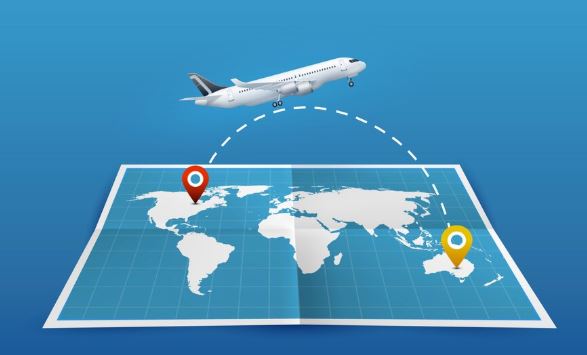The Direct Route Boom: New Air Connections Opening a World of Possibilities
The global aviation landscape is experiencing a significant shift: a boom in direct air routes. Airlines are increasingly bypassing traditional hubs to connect city pairs directly, driven by advancements in aircraft technology, changing passenger demands, and a strategic push for efficiency. This trend is not just about shaving time off your journey; it’s profoundly impacting global tourism, making once-remote destinations more accessible and reshaping travel patterns worldwide.
The Power of Point-to-Point Travel
Historically, many international journeys required multiple layovers, often funneling passengers through major hubs like London, Frankfurt, or New York. While these hubs remain vital, the rise of long-range, fuel-efficient aircraft like the Boeing 787 Dreamliner and the Airbus A350 has made direct flights economically viable for a broader range of city pairs. This “point-to-point” model offers several advantages:
- Reduced Travel Time: Less time spent in transit, fewer connections to worry about, and quicker arrival at your final destination.
- Increased Convenience: No more rushing between gates, re-checking luggage, or dealing with the stress of missed connections.
- Enhanced Comfort: Often, these direct flights are on newer, more comfortable aircraft.
Opening Up New Horizons: Accessing Once-Difficult Destinations
The most exciting aspect of the direct route boom is how it’s unlocking access to destinations that were previously challenging or prohibitively time-consuming to reach:
- Emerging Markets and Regional Hubs: Direct flights are increasingly linking secondary cities in different continents, fostering new business and leisure travel opportunities that bypass congested mega-cities. For example, a direct flight from a major European city to a growing economic hub in Southeast Asia, rather than requiring a stopover in a traditional gateway like Singapore or Hong Kong.
- Niche Tourism Destinations: Remote natural wonders, cultural sites, or adventure sports locales are becoming more accessible. Think direct flights to smaller airports near national parks or coastal resorts, catering to specific tourist segments. This reduces the reliance on extensive internal travel once a traveler lands in the main gateway city.
- Boosting Local Economies: New direct routes bring an influx of tourists and business travelers, directly benefiting local economies through increased spending on accommodation, dining, tours, and services. This can lead to job creation and infrastructure development in areas that were previously less connected.
Impact on Global Tourism Dynamics
The proliferation of direct routes is subtly, yet significantly, altering the dynamics of global tourism:
- Decentralization of Tourism: While major cities will always attract visitors, direct flights empower travelers to explore beyond the usual suspects. This can help alleviate overtourism in certain hotspots by distributing visitor traffic more widely.
- New Competition: Established airlines are facing increased competition from carriers (including low-cost long-haul airlines) that are aggressively pursuing these new direct connections, potentially leading to more competitive fares for consumers.
- Changing Tour Operator Strategies: Tour operators are adapting their packages to leverage these direct routes, creating more seamless and appealing itineraries that focus on deeper immersion in specific regions rather than whirlwind tours of multiple countries connected via hubs.
- Faster Business Connections: For business travelers, direct routes mean less fatigue and more productive time, fostering stronger economic ties between previously underserved city pairs.
As airlines continue to push the boundaries of range and efficiency, we can expect even more direct connections to emerge, continually shrinking the world and opening up a seemingly endless array of travel possibilities for every type of explorer. The future of travel is less about the longest journey, and more about the most direct path to discovery.




